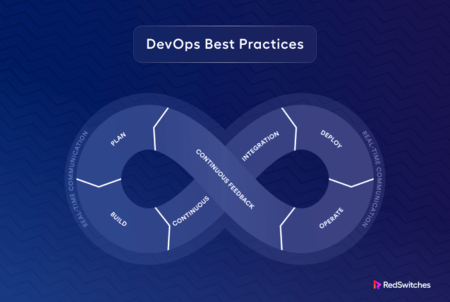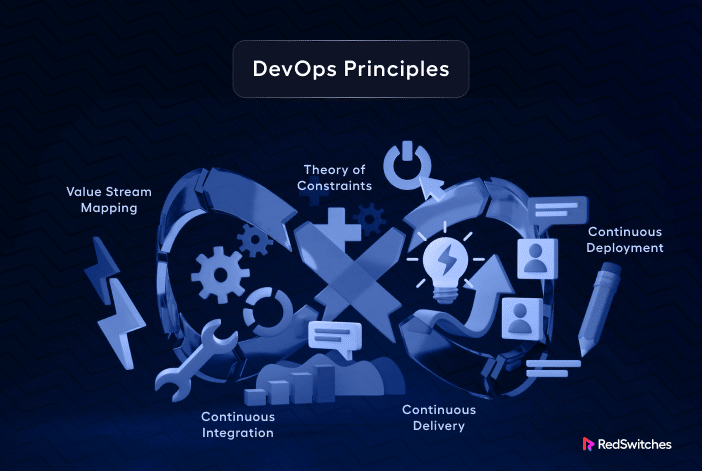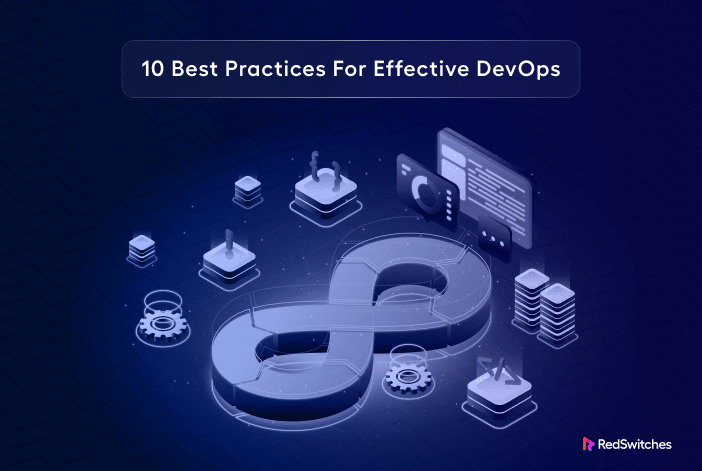Do you know that the word DevOps was coined in 2009 by Patrick Debois, one of the early advocates of collaboration between the development and operations teams?
However, DevOps went mainstream in the early 2000s when the software development teams started adopting Agile development practices to streamline production and enhance the quality of the final shipped products.
These days, DevOps have become the central operational foundation of software development and maintenance operations. Similarly, software products have evolved into SaaS, where developers must deliver new features and capabilities to their global user base.
Modern DevOps uses cloud computing resources and services to streamline software development and delivery. That’s why understanding and applying the DevOps best practices is now essential to producing great software products.
If you’re looking to build a strong DevOps foundation, consider enrolling in a DevOps Foundation online training course that covers these principles and practices thoroughly.
This article will introduce the essential principles of DevOps and the best practices you should follow to improve your DevOps career.
Table Of Contents
- The Core Principles in DevOps
- The DevOps Ten Best Practices
- Base DevOps in Agile Practices
- Adopt Strict Version Control
- Continuous Monitoring and Logging
- Utilize Container Orchestration
- Employ Tools for SBOM Management
- Integrate Identity and Access Management (IAM)
- Gather (and Deliver) Continuous Feedback
- Move Towards Cloud-native DevOps
- Instill Organization-wide DevOps Culture
- Stay Rooted in Agile Methodology
- Conclusion
- FAQs
The Core Principles in DevOps
Before discussing the DevOps best practices, we believe it’s important that you understand the core principles of DevOps. This background is important to assess the value of these best practices and their impact on improving the outcome of your organization’s DevOps processes.
Collaboration and Communication
Collaboration is DevOps’ central tenet. The development and operations teams collaborate to form a cohesive unit where both teams interact in depth, with two-way feedback during the entire development and deployment cycle.
As a result, the development and operations teams are combined to form a single unit that handles all phases of the application lifecycle. This DevOps team guarantees high-quality deliverables for all aspects of the product. The methodology encourages a “full stack” development environment in which the DevOps teams are responsible for the backend, frontend, and delivery.
Automation and Infrastructure as Code
Automating as much of the software development lifecycle as feasible is a crucial DevOps principle. The idea is to free up critical resources and developer-hours so the team can dedicate more effort to writing better code and creating new features.
For instance, an automated CI/CD pipeline component lowers human error rates and speeds up team output. Teams may achieve continuous improvement using automated processes and fast iterations, which enables them to react swiftly to client feedback.
Continuous Integration (CI)
The practice of automating the process of merging code changes from various contributors into a single software update is known as continuous integration (CI). This fundamental DevOps principle enables developers to regularly merge code changes into a single repository, after which builds and tests are executed.
Before integration, the new code is checked for correctness using automated tools. This ensures that the DevOps team can maintain the quality of the product/update across the release cycles without any conflicts that could affect user experience.
The core component of the CI process is a source code version control system. Additional components, such as automated tests for the quality of the code and tools for reviewing the syntax and style, can be added to the version control system.
Continuous Delivery (CD)
Building, testing, and distributing updates to the software code is called continuous delivery (CD). This DevOps principle is critical for ensuring the user-centricity of the software products. A well-planned CD process ensures that new updates are deployed to target platforms, ideally without downtime for the users.
DevOps teams focus on automating the release process by automating various aspects, such as module testing, to quickly deploy the latest updates.
The DevOps Ten Best Practices
Now that you know the core principles of DevOps, let’s dive into the ten DevOps best practices that can help optimize your organization’s software development and delivery processes
Base DevOps in Agile Practices
DevOps practices should closely follow the Agile development methodology to benefit from the iterative development process. The best DevOps processes depend upon numerous small increments where requirement gathering, code production, testing and deployment, and delivery are accomplished in a rapid continuous stream. You should also set up multiple feedback loops so the DevOps teams can focus on improving quality and removing issues.
Adopt Strict Version Control
Version control systems like Git, Subversion, and Mercurial offer a rational way to arrange project files and assets. Developers and project managers use these platforms to control asset creation access to these assets and help introduce Agile practices in software development.
Teams must employ version control for everything from source code, test and deployment scripts, infrastructure, and application configuration data to the libraries and packages they depend on to improve product delivery.
Continuous Monitoring and Logging
Monitoring and logging are two distinct procedures that collaborate to deliver data points that aid in tracking the performance and health of your software development process.
We recommend combining log management (which gathers, organizes, and reviews data in the log files) with monitoring tools (which keep track of metrics) to come up with a complete picture of your production and deployment systems.
Utilize Container Orchestration
Containers are a great way of isolating codebase in production or development environments. This allows developers to separate various moving parts of a large application and work on individual components without affecting the production version. The best practice is automating container orchestration so developers can use it with the automated CI/CD pipelines.
Employ Tools for SBOM Management
Modern software development is dependent upon third-party libraries and packages. In a large project, losing track of third-party components is easy. We highly recommend using a software bill of materials (SBOM) to track open-source and third-party software components.
The security teams rely on the SBOM to quickly identify concerns arising from integrating third-party codebases as project dependencies.
Integrate Identity and Access Management (IAM)
Given the continuous nature of the DevOps pipeline, you need to integrate a dedicated IAM component within the pipeline and version control systems. Since DevOps teams can have globally distributed members and external stakeholders, you must set up and deploy access controls that allow for temporary credentials to specific services and assets.
Gather (and Deliver) Continuous Feedback
The success of any DevOps workflow is dependent on continuous feedback to and from all team members. The feedback, in this sense, is a comprehensive idea that ensures all team members have all the relevant information they need for their tasks. This information can include test results, changes in delivery schedules, and new integrations in the CI/CD pipeline.
Timely information makes a DevOps team agile and focused on quality. With the proper feedback at the right time, the team members can work around revised delivery schedules and revise code to make sure their allotted module passes the tests in the next test cycle.
Move Towards Cloud-native DevOps
Cloud is now the preferred way businesses consume software and ICT services. Consequently, DevOps has transitioned from a hybrid (local and cloud) to a cloud-native environment. If you haven’t made the switch already, we highly recommend moving to a cloud-native DevOps production line. Your teams will benefit from the automation capabilities and scalability of the cloud environment.
In particular, you will see the following benefits:
- Resilience: Cloud platforms are inherently resilient to failures. As such, you get the high dependability that allows sustained operations of your DevOps pipeline.
- Flexibility: Cloud computing services can be mixed and matched to create the right environment for your DevOps operations.
- Cost-to-Benefit Ratio: Cloud computing models and service delivery mechanisms simplify implementing a CI/CD environment without costs going over budget.
Instill Organization-wide DevOps Culture
A DevOps culture is fundamentally about increasing cooperation and shared responsibility between operations and development for the products they design and oversee. This aids companies in unifying their staff, procedures, and tools around their customers.
Developing diverse teams who take ownership of a product’s entire lifecycle is necessary to establish a DevOps culture. DevOps teams operate independently and thus need a comprehensive communication strategy to deliver the best in software architecture, design, and development considerations.
Stay Rooted in Agile Methodology
Organizations should integrate DevOps and Agile to improve how they develop and deliver their products. Software development businesses that adopt DevOps to streamline product development should also adopt Agile development and project management practices to ensure rapid and iterative methodology for the entire organization.
These are the Ten DevOps best practices to consider that can help optimize your organization’s software development and delivery processes.
Conclusion
DevOps strongly emphasizes cooperation between development and operations teams to orchestrate fast software delivery.
We discussed several critical DevOps best practices you can adopt to streamline your DevOps processes. We mentioned how you should consider setting up security at all levels, implementing automation at all levels, and taking advantage of the cloud computing capabilities to deliver the best software to all users.
We at RedSwitches deliver the most appropriate hosting infrastructure for your DevOps pipelines. So, suppose you’re looking for a robust server infrastructure for your DevOps operations. In that case, we offer the best dedicated server pricing and deliver instant dedicated servers, usually on the same day the order gets approved. Whether you need a dedicated server, a traffic-friendly 10Gbps dedicated server, or a powerful bare metal server, we are your trusted hosting partner.
FAQs
Q. Can I use DevOps for all software projects?
DevOps principles may be used for various projects, including creating software, mobile apps, websites, and even hardware. Collaboration, automation, and continuous improvement are still relevant as essential ideas in these projects.
Q. Which DevOps tools are the most popular?
Depending on the use case and what you need to achieve, DevOps technologies range from Git (version control) to Ansible and Chef (configuration management) to Jenkins and CircleCI (CI/CD) and Docker and Kubernetes (containerization and orchestration).
Q. How important is culture to DevOps?
The DevOps culture strongly emphasizes teamwork, communication, shared duties, and a continuous improvement approach. It dismantles team silos and promotes a collaborative and creative work atmosphere.



